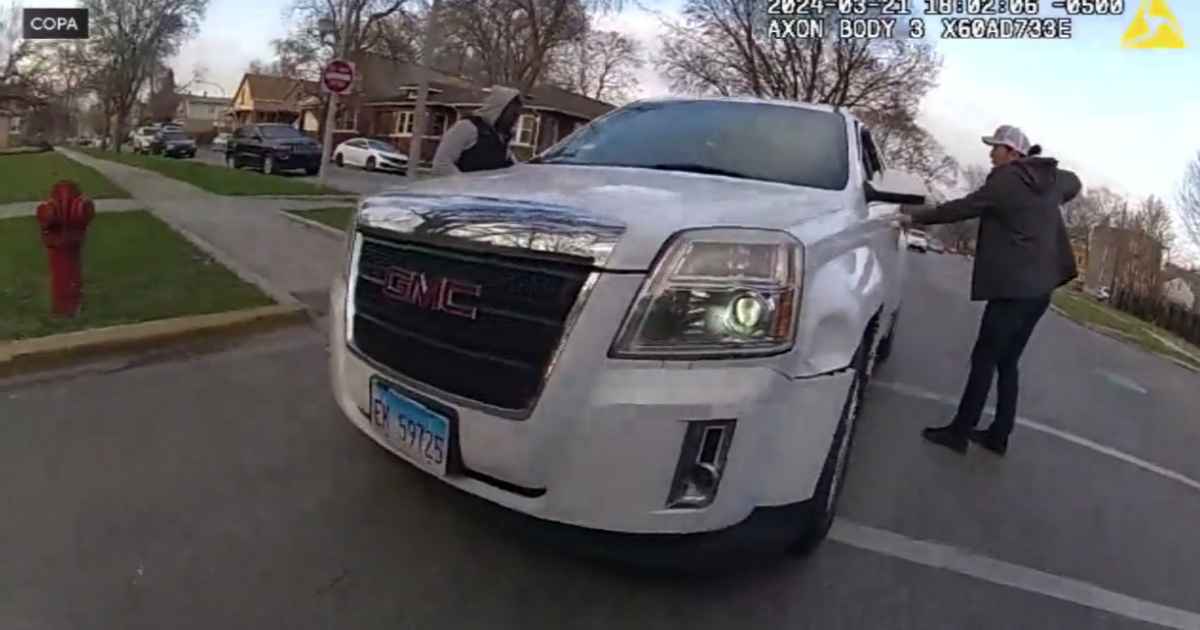Adding Ambulances Hasn't Improved Emergency Response Times, Data Shows; 'This Is An Egregious Shell Game'
CHICAGO (CBS) – Last summer, the Chicago Fire Department hailed the addition of five new ambulances as a step to cutting chronically slow response times to emergency calls.
The extra rigs came, in part, to a series of CBS 2 Investigator stories by Pam Zekman that showed response times were 20 minutes, or even longer, in many cases.
Have they made a difference?
Not really, according to an analysis of eight months of Office of Emergency Management and Communications (OEMC) data. With the summertime addition, the fleet was up to 80 ambulances. It wasn't enough, according to a top CFD paramedic.
"A hundred was the number we felt we needed," said Chicago Fire Department Paramedic Field Chief Patrick Fitzmaurice.
Fitzmaurice has criticized the fire department for years for not adding more ambulances.
"It was putting a Band-Aid on a wound that needed a tourniquet," said Fitzmaurice.
The CBS 2 Investigators compared ambulance response times for the four months before the new ambulances were added to the same four months after the addition. That is more than 200,000 lines of data, from the OEMC.
The analysis revealed that the average response times improved just four seconds-- from seven minutes, 22 seconds to seven minutes, 18 seconds.
The state standard is six minutes.
"That's great if you're running a race in the Olympics, I guess," said Fitzmaurice. "That's insignificant as far as we go."
What's more, response times were supposed to be helped when the University of Chicago opened its trauma center last spring because ambulances wouldn't have to travel as far for critical runs. The data shows only an incremental improvement.
CBS 2 found one case last month in which it took an ambulance 19 minutes to arrive after an 83-year-old grandmother fell and lost consciousness.
"We called the ambulance; and we waited, and we waited," said the woman, who made the 911 call. She did not want to be identified.
After the family frantically waited, the paramedics finally arrived an apologized for taking so long, the woman said.
"She could be unconscious for God knows how long; she could be bleeding," she said. "We didn't know what was going on with her."
In another case, a man walked into Engine Company 99, suffering from chest pains. The problem: There was no ambulance. It took 12 minutes for Ambulance 23 to come from a different firehouse and take the patient to a hospital.
"That could be life or death," said Fitzmaurice.
Further analysis showed most ambulances go on 10 runs in a 24-hour period, but the busiest ambulances can have up to 18 runs a day.
"The other day when all the ice was falling you had ambulances flying in to downtown from all over the city," Fitzmaurice said.
At the current fleet level of 80 ambulances, Chicago ranks last in number of ambulances per one thousand people when compared to other big cities.
If Chicago added 20 more ambulances the rate of ambulances per 1000 people jumps to 3.7 per 1,000 people -- meeting national norms.
A recent industry report agreed with Fitzmaurice and others saying the Chicago Fire Department needs to bring its fleet up to 100 ambulances.
In 2015, the Chicago Inspector General issued a report criticizing the Fire Department for not properly tracking response times.
"We said the analysis needed to be done. They need to make better use of their data, they needed to account for what they were doing with their data," said Chicago Inspector General Joe Ferguson.
The Fire Department said the data we analyzed from the OEMC is unreliable, as well as the data used by the inspector general. The department also questions data used by the paramedics union calling for more ambulances.
"This is an egregious shell game at this point in time; everybody else is wrong, they're right, but they can't explain why they're right," Ferguson said. "It's reckless. It's irresponsible. It's spin. It's a shell game."
The Fire Department claimed they will be issuing their own report on response times in the next couple of months. It is a report CBS 2 has been been waiting on for years.
Fitzmaurice laughed when he was told that CFD said the OEMC numbers we used for our analysis were unreliable.
"Of course they do, of course they do," he said. "That's their job, to point you in a different direction."
"They have to do something about this; it's not fair," said the woman who called 911 for her grandmother. "Especially for living in such a big city which is Chicago."
The Fire Department said it is now manually reviewing data to identify discrepancies, technical issues or operating errors. Until that is done, it cannot verify the accuracy of response time data.
All that will take at least 45 days, an official said. Meanwhile, the Inspector General is calling on the Chicago City Council to hold hearings on ambulance response times. That might force Fire Department officials to finally answer some questions. No one from the Fire Department would do an on-camera interview for this story.
Here is the entire statement provided by the Chicago Fire Department:
"Ensuring Chicago has the highest quality emergency medical services and rapid ambulance response times is our top priority. Following last summer's expansion of the department's ambulance fleet, CFD announced it would conduct a comprehensive analysis on the impact of the five new ambulances to ensure it meets the needs of Chicago.
To ensure the accuracy of this intensive study, CFD is reviewing data manually to determine any discrepancies, technical issues, or operating errors; the department estimates it will need no less than 45 days to complete this review. While the department's analysis is underway, we cannot verify the accuracy of raw data and information that has not undergone a comprehensive review by the Chicago Fire Department."



